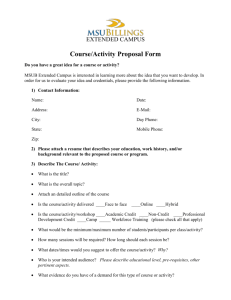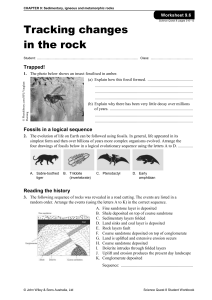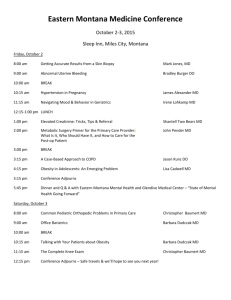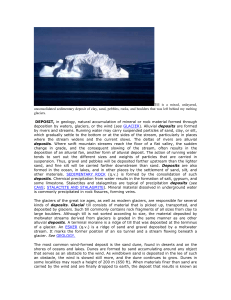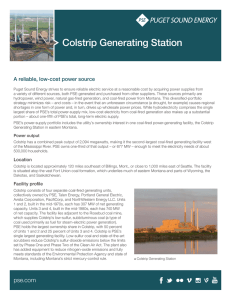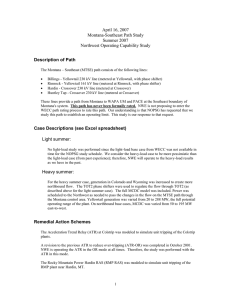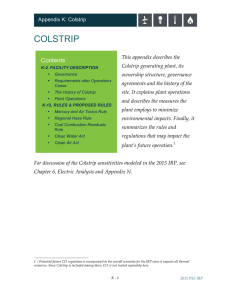22. Sediment
advertisement
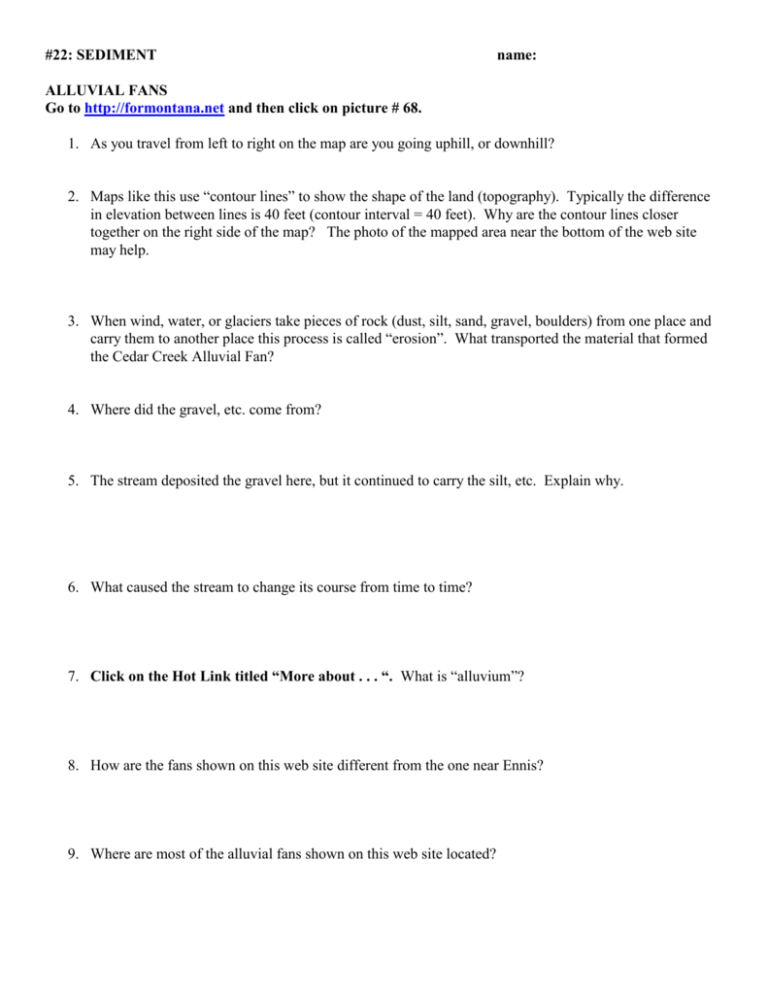
#22: SEDIMENT name: ALLUVIAL FANS Go to http://formontana.net and then click on picture # 68. 1. As you travel from left to right on the map are you going uphill, or downhill? 2. Maps like this use “contour lines” to show the shape of the land (topography). Typically the difference in elevation between lines is 40 feet (contour interval = 40 feet). Why are the contour lines closer together on the right side of the map? The photo of the mapped area near the bottom of the web site may help. 3. When wind, water, or glaciers take pieces of rock (dust, silt, sand, gravel, boulders) from one place and carry them to another place this process is called “erosion”. What transported the material that formed the Cedar Creek Alluvial Fan? 4. Where did the gravel, etc. come from? 5. The stream deposited the gravel here, but it continued to carry the silt, etc. Explain why. 6. What caused the stream to change its course from time to time? 7. Click on the Hot Link titled “More about . . . “. What is “alluvium”? 8. How are the fans shown on this web site different from the one near Ennis? 9. Where are most of the alluvial fans shown on this web site located? WESTERN INTERIOR SEAWAY Go back to http://formontana.net and then click on picture # 5. 11. Look at the map on the web page. How was the Cretaceous Atlantic Ocean different from the modern Atlantic? 12. What would it have been like in the eastern half of Montana during the Cretaceous Period? 13. What was happening in Western Montana at this time, and why did this cause the coastline in central and eastern Montana to shift back and forth? 14. When the material that makes up the Rimrocks of Billings was deposited, was the coast near the present location of Billings, or far from it? EAGLE SANDSTONE Go to http://formontana.net and then click on picture # 17. 15. This painting shows the Lewis and Clark Expedition on the Missouri River. The bottom photo shows the same area. Which material was deposited first . . . the silt (shale), or the sand? How do you know? 16. Why did the type of material deposited here switch from silt to sand? 17. What is the difference between silt and sand that is discussed in the explanation? 18. Why was this sandstone named the Eagle Sandstone (or Eagle formation)? 19. What do we call the cliffs of Eagle sandstone that can be seen in Billings? Go to http://formontana.net and then click on picture # 1. 20. Over half of the electricity used in Montana comes from the burning of coal, and most of that comes from Colstrip. Use your Montana Highway Map and a ruler to find Colstrip. Look on the list of cities and towns to find the coordinates. What Indian Reservation is just south of Colstrip? 21. If coal is present in an area beneath the ground, what must have been there when that area was at the surface? 22. Why is “strip mining” used here instead of “underground mining”? 23. What caused coal mining in the Colstrip area to pick up in the 1970s? Explain the connection. 24. Look at the diagram near the bottom of the web page. Using the information in the paragraph above the diagram, figure out what each of the areas on the diagram are called. Put your answers (A to H) in the space below 25. Use a dictionary or dictionary.com to define the term “reclamation”. 26. Even though the land is reclaimed after the coal is removed, how will the layer of rock beneath the surface be different after the reclamation is complete? 27. Click on the Hot Link that has an asterisk, and then click on “Electricity Net Generated by Fuel”. In 1999, what percentage of Montana’s electricity came from coal-fired plants?
